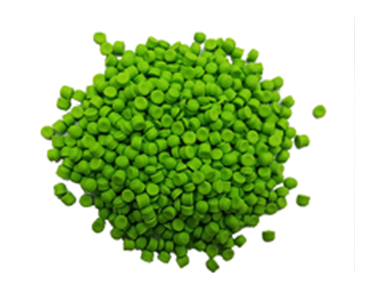Industry news
A kind of photothermal conversion carbon fiber, which will help seawater desalination
Release time:2018-12-17 11:46:00
Author:admin
Clicks:
Source: Ningbo Institute of materials, Chinese Academy of Sciences|
It is a low-cost and low maintenance seawater desalination technology to use the principle of photothermal conversion for seawater desalination. As we all know, solar energy, as a clean and sustainable green energy, has become the focus of energy conversion and utilization in recent years, and has been widely used in photovoltaic power generation, photocatalysis and photothermal conversion.
At present, photothermal conversion materials mainly include carbon based materials, plasmon materials and semiconductor materials. Due to their physical and chemical stability, the above materials have application limitations in extreme environments such as high salt spray, high temperature, high humidity and high corrosion, such as the separation and purification of high salt sea water (10wt%), brackish water, strong polar organic solvents, oil-water lotion and other multi-media.
In order to solve the above problems, researcher Liu Fu from the advanced functional membrane team of Ningbo Institute of materials, Chinese Academy of Sciences designed and prepared a carbon fiber material with ultra stable environmental tolerance for photothermal conversion and multi-media purification.
The research team introduced a stable carbon layer on the surface of carbon fiber through hydrothermal synthesis technology to improve the surface roughness, increase the specific surface area to 0.5m2g, and increase the light absorption at the wavelength of 200-2500 nm from 89% before modification to 97%; In addition, some polar functional groups were introduced in the carbonization modification process, and the surface polarity of the modified carbon fiber was improved, and the polar surface energy was increased to 20mm / m, so that the carbon fiber could self extract the liquid (water or organic solvent) by virtue of the capillary force between the fibers, without adding additional extraction materials, simplifying the design of solar evaporation devices. The woven carbon fiber layer can be directly used as a water collecting and photothermal conversion layer for purification of various media.
The experimental results show that the photothermal conversion efficiency of carbon fiber after carbonization modification can reach 92.5%, the photothermal conversion rate of seawater can reach 1.47 kgm-2h-1 under one standard sun, and the photothermal conversion rate is ~ 5.86 kgm-2h-1 under five standard suns. The carbon fiber distiller has a long-term stable desalination effect on high salt seawater (simulated Dead Sea seawater, salt concentration 10wt%). The carbon fiber distiller operates continuously outdoors for 10 days, The daily water production is stable at ~ 7kgm-2, and the mechanical strength is stable. Due to the rich multi-level fiber structure and good capillary water absorption ability of carbon fiber, it has good dissolution and self-healing ability for the crystallization of high salt seawater on the fiber surface. The salt precipitated from the crystallization on the surface of carbon fiber will be re dissolved into the seawater after standing for one night, thus not affecting the photothermal conversion effect of carbon fiber. In addition, the modified carbon fiber has a good removal effect on oil in water lotion (nonvolatile silicone oil), and the silicone oil content in water can be reduced from 10000ppm to 11.9ppm; It can purify organic solvents containing dyes such as dimethylacetamide in the printing and dyeing industry, showing good decolorization and purification effects. The dye removal rate is 99.99%, and the evaporation rate is 0.98 kgm-2h-1. It can also withstand the strong polar organic solvent dimethylacetamide for a long time (soaking for 10 days), and its mechanical strength does not change.
The above results show that the carbonized modified carbon fiber materials have broad application prospects in the field of multi-media purification, such as desalination of high salt seawater, decolorization of organic solvents, and deoiling of oil-water lotion, which greatly expand the current application fields of carbon fiber and photothermal conversion materials in solvent purification.
It is a low-cost and low maintenance seawater desalination technology to use the principle of photothermal conversion for seawater desalination. As we all know, solar energy, as a clean and sustainable green energy, has become the focus of energy conversion and utilization in recent years, and has been widely used in photovoltaic power generation, photocatalysis and photothermal conversion.
At present, photothermal conversion materials mainly include carbon based materials, plasmon materials and semiconductor materials. Due to their physical and chemical stability, the above materials have application limitations in extreme environments such as high salt spray, high temperature, high humidity and high corrosion, such as the separation and purification of high salt sea water (10wt%), brackish water, strong polar organic solvents, oil-water lotion and other multi-media.
In order to solve the above problems, researcher Liu Fu from the advanced functional membrane team of Ningbo Institute of materials, Chinese Academy of Sciences designed and prepared a carbon fiber material with ultra stable environmental tolerance for photothermal conversion and multi-media purification.
The research team introduced a stable carbon layer on the surface of carbon fiber through hydrothermal synthesis technology to improve the surface roughness, increase the specific surface area to 0.5m2g, and increase the light absorption at the wavelength of 200-2500 nm from 89% before modification to 97%; In addition, some polar functional groups were introduced in the carbonization modification process, and the surface polarity of the modified carbon fiber was improved, and the polar surface energy was increased to 20mm / m, so that the carbon fiber could self extract the liquid (water or organic solvent) by virtue of the capillary force between the fibers, without adding additional extraction materials, simplifying the design of solar evaporation devices. The woven carbon fiber layer can be directly used as a water collecting and photothermal conversion layer for purification of various media.
The experimental results show that the photothermal conversion efficiency of carbon fiber after carbonization modification can reach 92.5%, the photothermal conversion rate of seawater can reach 1.47 kgm-2h-1 under one standard sun, and the photothermal conversion rate is ~ 5.86 kgm-2h-1 under five standard suns. The carbon fiber distiller has a long-term stable desalination effect on high salt seawater (simulated Dead Sea seawater, salt concentration 10wt%). The carbon fiber distiller operates continuously outdoors for 10 days, The daily water production is stable at ~ 7kgm-2, and the mechanical strength is stable. Due to the rich multi-level fiber structure and good capillary water absorption ability of carbon fiber, it has good dissolution and self-healing ability for the crystallization of high salt seawater on the fiber surface. The salt precipitated from the crystallization on the surface of carbon fiber will be re dissolved into the seawater after standing for one night, thus not affecting the photothermal conversion effect of carbon fiber. In addition, the modified carbon fiber has a good removal effect on oil in water lotion (nonvolatile silicone oil), and the silicone oil content in water can be reduced from 10000ppm to 11.9ppm; It can purify organic solvents containing dyes such as dimethylacetamide in the printing and dyeing industry, showing good decolorization and purification effects. The dye removal rate is 99.99%, and the evaporation rate is 0.98 kgm-2h-1. It can also withstand the strong polar organic solvent dimethylacetamide for a long time (soaking for 10 days), and its mechanical strength does not change.
The above results show that the carbonized modified carbon fiber materials have broad application prospects in the field of multi-media purification, such as desalination of high salt seawater, decolorization of organic solvents, and deoiling of oil-water lotion, which greatly expand the current application fields of carbon fiber and photothermal conversion materials in solvent purification.









